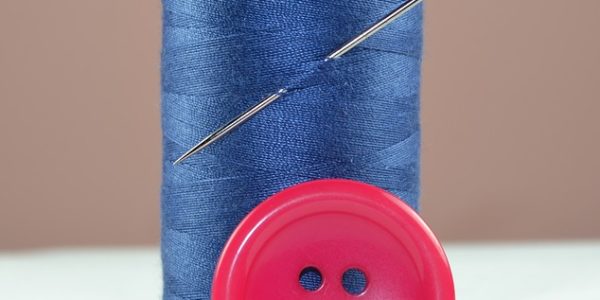Industrial robots have been able to handle, manipulate, and assemble rigid materials for ages. It’s the soft, flexible, and flowy materials that give robots trouble. Steel is predictable. You know what it’s going to do and where it’s going to be. Fabric, on the other hand, is wily and unpredictable. Cloth cascades, slips, and folds in ways that make it difficult for robots to work with. That’s changing, however.
The Sewbot
IEEE Spectrum recently published a story about sewing robots capable of putting together a t-shirt in under 30 seconds.
SoftWear Automation out of Atlanta, Georgia has developed a sewing robot that they’re calling Sewbot. These robots can make pillows, t-shirts, jeans, pants, tote bags, towels, mats, and mattresses. According to IEEE Spectrum, Sewbots can make a t-shirt in 22 seconds.
There are plans to put dozens of these robots to work in a Little Rock, Arkansas factory later this year. They’ll be deployed on 21 production lines making 23 million T-shirts per year for Adidas.
Automating sewing
Sewing has proven to be an especially difficult part of manufacturing to automate. SoftWear’s Sewbot could be an important breakthrough in bringing automation to garment manufacturing.
Sewbots use a special camera that can capture 1,000 frames per-second which tracks individual threads rather than tracking complete textiles.
The robots also use manipulators that recreate the way operators use fingers to handle fabric, a robotic arm with a vacuum gripper, and 360-degree conveyor system to move fabric around.
How will this affect manufacturing?
The IEEE article claims that SoftWear’s robots can perform the work of 10 workers in almost half the time. This would, of course, drive down production costs significantly. The production cost would be $0.33 per shirt, which would effectively quash any competition from even the cheapest labor markets.
If Sewbots can deliver, automated sewing could completely revolutionize garment manufacturing. They would make shirts faster, cheaper, and more with more customization than any human workforce. Sewbots could help stop the garment industry from relying on sweatshops and cheap labor.
Automating sewing is still very difficult, however. It will be quite some time before you’re dressed head to toe in robot-made garb.
Your motion control system may not have machine vision with a 1,000 fps camera, but it’s reliably met all of your motion control needs for the past 20 years. Make sure you keep it that way. Call 479-422-0390 for any of your Indramat service needs.



